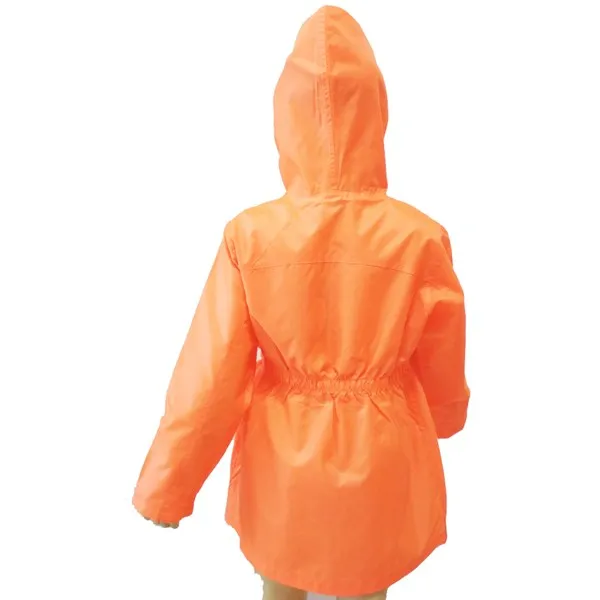 rainwears@163.com may@may-rain.com
rainwears@163.com may@may-rain.com Mon to Friday: 8.00 am - 7.00 pm
Mon to Friday: 8.00 am - 7.00 pm
A Practical Guidance of Cute Raincoats for Juniors
Rainwear for children combines functionality and style, ensuring protection from wet weather while appealing to young wearers. This guide explores cute raincoats for juniors, focusing on design variations, material considerations, and practical applications. Key products such as the childs rain poncho, childrens waterproof poncho, and colorful options like the childrens red raincoat or childrens yellow rain coat will be examined. Additionally, the role of design elements, including apron line drawing references, will be discussed to highlight how aesthetics meet utility.
Key Materials in Children's Rainwear
The construction of cute raincoats for juniors relies heavily on specialized waterproof fabrics that balance protection with comfort. Most high-quality options use polyester or nylon with polyurethane coatings, creating a water-resistant barrier while remaining lightweight. These materials are particularly important for childrens waterproof raincoats as they prevent the absorption of moisture while allowing some breathability to avoid overheating.
Manufacturers often enhance these base materials with additional treatments for improved performance. Many childrens yellow rain coat designs feature UV-protective coatings for sunny yet wet weather conditions. Some premium versions incorporate eco-friendly water-repellent finishes that avoid harmful chemicals while maintaining effectiveness. The interior lining typically uses soft mesh or cotton blends to prevent skin irritation, especially important for all-day wear at school or outdoor activities.
Durability considerations lead many brands to reinforce high-stress areas with extra material layers or stitching. The childrens red raincoat often shows these reinforcements most visibly at shoulders and elbows where wear occurs most frequently. Seam sealing techniques vary from basic tape methods to fully welded seams in higher-end models, with the latter providing superior waterproofing for prolonged exposure to heavy rain.
Features of Cute Raincoats for Juniors
First of all, cute raincoats for juniors prioritize lightweight, waterproof materials such as polyester or PVC-coated fabrics. These fabrics repel water effectively while allowing breathability, preventing discomfort during extended wear. Many designs also feature taped seams to eliminate leakage, ensuring complete protection during heavy rain. Besides, adjustable features like hoods, toggle-fastened hems, and elastic cuffs ensure a secure fit, accommodating growth spurts and varying body shapes.
In addition, vibrant colors and playful patterns distinguish these raincoats from standard adult versions. For example, the childrens yellow rain coat offers high visibility, making it a practical choice for safety-conscious parents. The childrens red raincoat, on the other hand, provides a bold, classic look that remains stylish across seasons. Furthermore, packable designs allow easy storage in school bags, making them convenient for sudden weather changes. Some models even include a compact carrying pouch, enhancing portability.
Additional functional elements include reinforced stress points, such as shoulder and elbow areas, to withstand frequent use. Reflective strips or piping are often incorporated for increased visibility in low-light conditions. These features ensure that childrens waterproof raincoats are not only fashionable but also durable and safe for everyday wear.
Variations in Cute Raincoats for Juniors
The childs rain poncho is a popular alternative to traditional raincoats, offering full-body coverage with minimal restriction. Unlike fitted coats, ponchos such as the childrens waterproof poncho are loose-fitting, allowing freedom of movement, which is ideal for active children. These often include snap buttons or zippered fronts for adjustable ventilation, preventing overheating during mild drizzles or heavy downpours.
Moreover, ponchos designed for younger children may feature integrated mitts or thumb loops to secure sleeves, keeping hands dry and warm. The childrens rain poncho with a hood provides additional head protection, while longer lengths shield backpacks or uniforms from moisture. Some models include a carrying pouch, enhancing portability when not in use. The simplicity of the design also makes ponchos easier for children to put on and take off independently.
Design influences, such as an apron sketch or apron line drawing , may contribute to decorative elements like front panels or tie belts, adding a playful touch. Some ponchos even come in reversible styles, offering two looks in one garment. Whether for school, outdoor play, or travel, the childrens waterproof poncho remains a versatile and practical choice for wet weather.
Finally, choosing between a childrens waterproof raincoat and a childrens waterproof poncho depends on the child's needs and preferences. Fitted coats suit active wearers, while ponchos offer versatility. Design inspirations, such as an apron sketch or apron line drawing, may influence decorative details like front panels or tie belts. Regardless of style, durability, comfort, and visibility remain essential factors in selecting rainwear for juniors.

-
The Ultimate High Visibility Rain Jacket With Hood
NewsNov.19,2025
-
Staying Dry With a High-Vis Bicycle Raincoat
NewsNov.19,2025
-
Caring for and Washing Your Lined Rain Jacket
NewsNov.19,2025
-
Breathable Men Raincoat with Hood for Hiking
NewsNov.19,2025
-
Custom Women’s Waterproof Raincoat – Hooded Outdoor 1-Piece
NewsNov.17,2025
-
Long Men’s reflective rainwear raincoat - Waterproof Hi-Vis
NewsNov.17,2025































